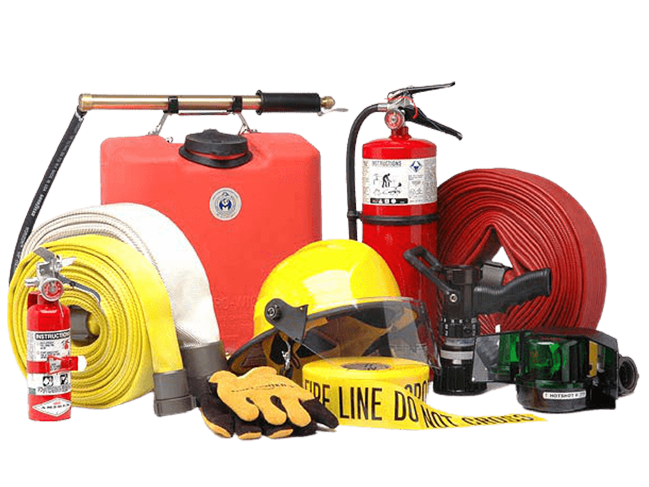The Essential Guide to Fire Alarms
The Essential Guide to Fire Alarms: Importance, Functionality, and Applications

Fire Alarm Systems in Qatar – RGI Fire's Commitment to Safety
At RGI Fire, we understand that fire alarms are not just devices—they are a critical part of protecting lives, assets, and infrastructure. As a trusted fire safety solutions provider in Qatar, we specialize in designing, supplying, and installing reliable fire alarm systems that meet local regulations and the highest international standards.
Whether it's a residential complex, commercial facility, or industrial site, a well-designed fire alarm system provides early warning in case of fire, allowing timely evacuation and emergency response. In this blog, we’ll highlight the importance of fire alarm systems, how they work, the typical environments they serve, the types available in Qatar, their integration with other life safety systems, and the essential factors to consider for proper installation and ongoing maintenance.
The Importance of Fire Alarms
Fires can spread rapidly, and early detection is critical to ensuring the safety of occupants. Fire alarms serve as the first line of defense by detecting smoke, heat, or flames and alerting people to evacuate. They significantly reduce the risk of fatalities and injuries by providing crucial time for response. Additionally, fire alarms help to mitigate property loss and allow for faster emergency intervention by firefighters. Compliance with fire alarm regulations also ensures legal and insurance requirements are met.
How Fire Alarms Work
Fire alarms operate using various detection mechanisms, including:
Smoke Detectors
These are the most common types and use either ionization or photoelectric technology to detect smoke particles in the air. Ionization detectors respond quickly to fast-flaming fires, while photoelectric detectors are more effective at detecting smoldering fires.
Heat Detectors
These alarms detect significant temperature increases, making them ideal for areas where smoke or steam may be present, such as kitchens and boiler rooms.
Flame Detectors
These alarms sense infrared or ultraviolet light emitted by flames and are commonly used in industrial settings where fire hazards are high.
Gas Detectors
Some advanced fire alarm systems include sensors for detecting hazardous gases like carbon monoxide or flammable vapors, enhancing safety beyond just fire detection.
Once a fire alarm detects a potential fire, it triggers an audible and visual warning, such as sirens, flashing lights, or even voice alerts, to prompt immediate evacuation. Some advanced systems can automatically notify emergency services and trigger fire suppression systems.
Common Areas of Use
Fire alarms are used in a variety of settings, including:
Residential Homes
Smoke detectors are mandatory in most homes to ensure early fire detection.
Commercial Buildings
Offices, shopping centers, and hotels require sophisticated fire alarm systems integrated with sprinkler systems.
Industrial Facilities
Factories and warehouses use heat and flame detectors due to the presence of hazardous materials.
Hospitals and Schools
These locations require comprehensive fire alarm systems to ensure the safety of large groups of people, including vulnerable individuals.
Public Transport Hubs
Airports, train stations, and underground metros use fire alarm systems to prevent catastrophic incidents.
Data Centers and Server Rooms
Specialized fire alarm systems with gas-based suppression systems are used to protect critical electronic infrastructure.
Types of Fire Alarm Systems

Fire alarm systems can be categorized based on their operational mechanism:
Conventional Fire Alarm Systems
These systems divide buildings into zones, with alarms triggering based on which zone detects a fire.
Addressable Fire Alarm Systems
More advanced than conventional systems, they pinpoint the exact location of a fire, improving response times.
Wireless Fire Alarm Systems
These systems use radio signals instead of wiring, making installation easier and more flexible.
Automatic Fire Alarm Systems
Integrated with fire suppression systems like sprinklers, these alarms take immediate action upon detection.
Integration with Other Safety Systems
Modern fire alarm systems can be integrated with other safety measures, such as:
Emergency Lighting
Ensures visibility during evacuations.
Fire Suppression Systems
Activates sprinklers, gas suppression, or foam-based systems to control fires.
Remote Monitoring and Smart Technology
Allows real-time monitoring via mobile apps or security control centers for quick response.
Installation and Maintenance Considerations
For a fire alarm system to function effectively, proper installation and maintenance are essential:
Placement
Smoke detectors should be installed in every sleeping area, outside bedrooms, and on every level of a home or building.
Regular Testing
Fire alarms should be tested monthly to ensure they are working correctly.
Battery Replacement
Batteries should be replaced annually or as needed to prevent system failure.
Professional Inspections
Commercial and industrial buildings require periodic inspections by fire safety professionals to comply with local fire codes and regulations.
Software and Firmware Updates
For smart fire alarm systems, keeping software updated ensures optimal performance and security.
Conclusion
Fire alarms are an indispensable part of any fire safety plan. Their ability to detect fires early and alert people to evacuate makes them a vital investment for homes, businesses, and public places. Ensuring proper installation, regular maintenance, and adherence to safety regulations can significantly enhance protection against fire-related disasters. Additionally, integrating fire alarms with modern safety systems further enhances response efficiency. Stay safe and make fire alarms a priority in your fire prevention strategy!






